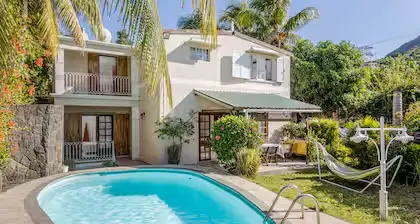A custom pool can be the centerpiece of your backyard, offering both aesthetic appeal and a place for relaxation and entertainment. However, building a pool involves careful planning, skilled construction, and ongoing maintenance.
This guide will walk you through the essential aspects of designing, constructing, and maintaining your custom pool, ensuring it meets your vision and stands the test of time.
Designing Your Perfect Pool
Designing a custom pool is the first step in turning your backyard into a personal oasis. Whether you’re dreaming of a sleek, modern pool or a more natural, lagoon-style design, the options are endless with experts such as So Cal Custom Pools & Spas.
Key Factors to Consider in Pool Design
Before diving into the construction phase, it’s important to consider the following design elements:
- Purpose: Will your pool be primarily for relaxation, exercise, or entertainment? Defining the purpose will guide the design process.
- Shape and Size: The shape and size of your pool should complement your backyard’s layout and your personal style. Rectangular pools offer a classic look, while freeform pools create a more organic feel.
- Materials and Finishes: From tile and plaster to natural stone and glass, the materials and finishes you choose can dramatically affect the pool’s appearance and durability.
- Additional Features: Consider incorporating features like waterfalls, lighting, or a built-in spa to enhance your pool’s functionality and ambiance.
The Construction Process: Bringing Your Design to Life
Once you’ve finalized your design, it’s time to bring your vision to life through construction. Building a pool is a complex process that requires professional expertise, like that provided by Relief Pools from Baton Rouge, LA, to ensure safety, durability, and aesthetic appeal.
Steps Involved in Pool Construction
The construction process can vary depending on the design and materials, but it generally includes the following steps:
- Site Preparation: The first step is preparing the site by excavating the area where the pool will be built. This includes removing soil and leveling the ground to create a stable foundation.
- Forming and Steel Work: Once the site is prepared, the pool’s shape is formed using wooden or metal frameworks. Reinforced steel is then added to provide structural support.
- Plumbing and Electrical Work: This phase involves installing the necessary plumbing and electrical systems to ensure the pool functions properly. This includes setting up the filtration system, heating system, and lighting.
- Gunite or Shotcrete Application: The pool’s shell is created by spraying a concrete mixture called gunite or shotcrete over the steel framework. This material is durable and can be molded into any shape.
- Tiling and Finishing: After the shell is complete, tiles are applied, and the pool is finished with plaster, pebble, or another surface material of your choice.
- Filling and Testing: Once construction is complete, the pool is filled with water, and the systems are tested to ensure everything is functioning correctly.
Pool Maintenance:
Maintaining your pool is essential to keep it looking great and operating efficiently. Regular maintenance not only extends the life of your pool but also ensures it remains a safe and inviting space for you and your family.
Essential Pool Maintenance Tips
To keep your pool in top condition, follow these essential maintenance tips:
- Regular Cleaning: Skim the surface daily to remove leaves and debris, brush the walls and floor weekly, and vacuum as needed to prevent algae and dirt buildup.
- Water Chemistry: Test the water regularly to maintain the correct pH balance, chlorine levels, and alkalinity. Proper water chemistry prevents corrosion, scaling, and cloudy water.
- Filter Maintenance: Clean or backwash the filter regularly to ensure it operates efficiently. A clean filter helps keep the water clear and free of contaminants.
- Check for Leaks: Regularly inspect your pool for leaks by monitoring the water level and checking for any wet spots around the pool area. Catching leaks early can prevent costly repairs.
- Seasonal Care: Depending on your location, you may need to winterize your pool during colder months or prepare it for summer use. Follow the appropriate steps to protect your pool during the off-season.
Fun Fact: The World’s Largest Swimming Pool
Did you know that the world’s largest swimming pool is located at the San Alfonso del Mar resort in Chile? This massive pool spans over 20 acres, holds 66 million gallons of water, and is more than 1,000 yards long. It’s so large that you can sail small boats on it!
Enjoying Your Custom Pool for Years to Come
Building a custom pool is an exciting project that, when done right, can provide years of enjoyment and add significant value to your property.
By carefully planning the design, working with experienced professionals during construction, and committing to regular maintenance, you’ll ensure that your pool remains a beautiful and functional part of your home for many years.
Whether you’re lounging by the water, hosting a pool party, or taking a refreshing swim, your custom pool is sure to become a beloved feature of your outdoor space.







